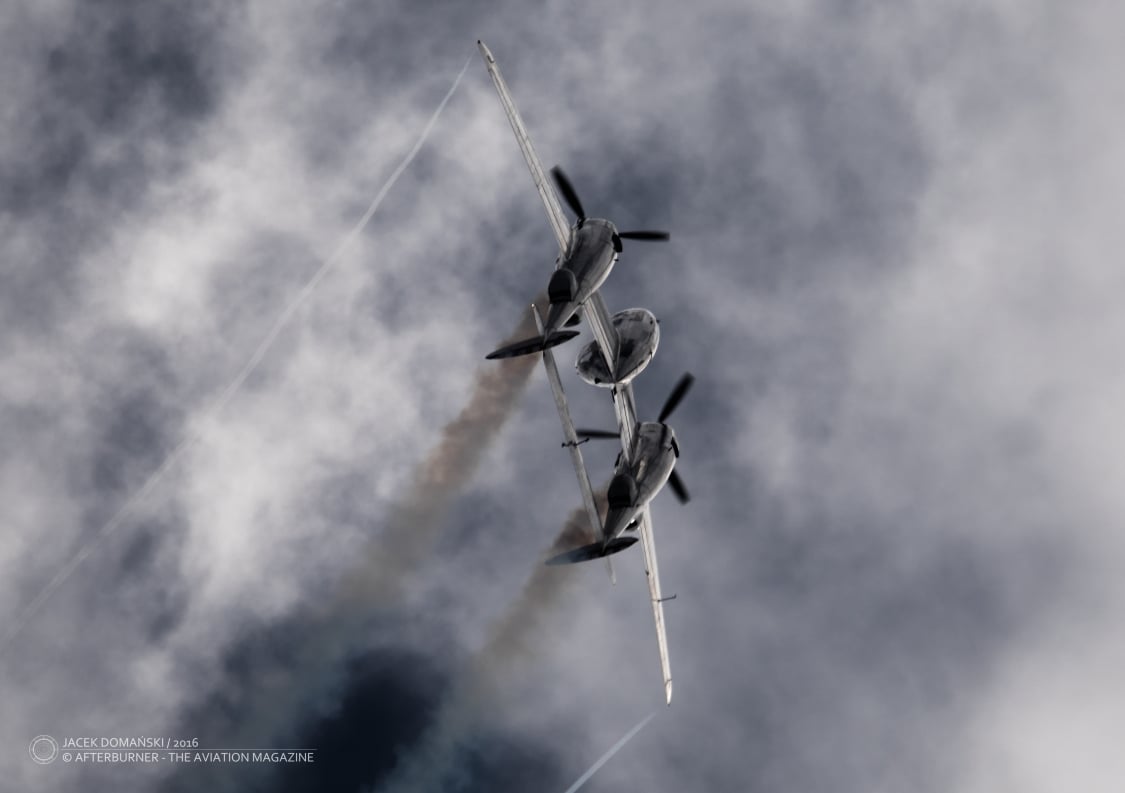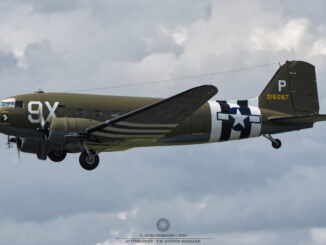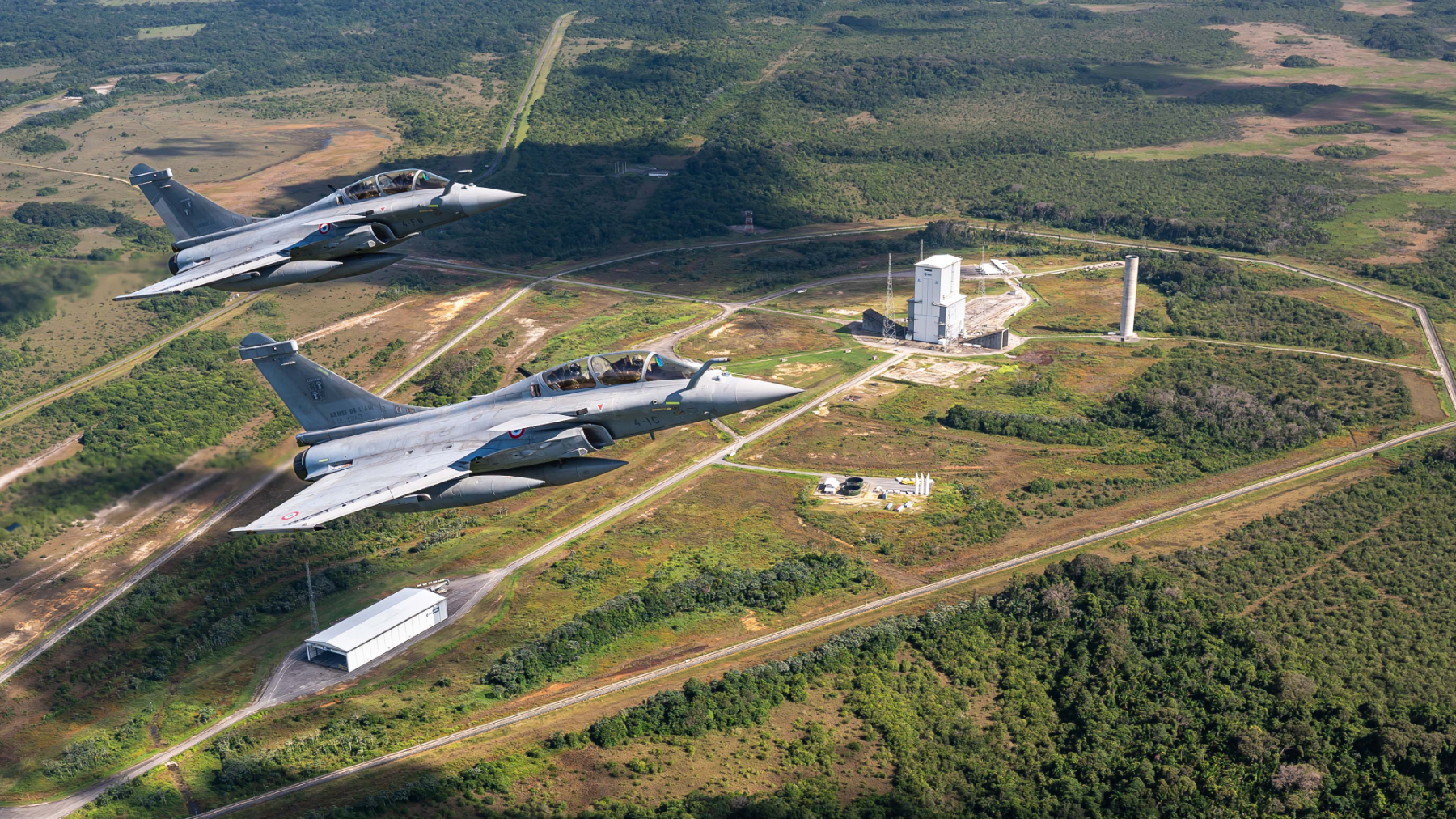 On 12th August 2025, the Ariane 6 expendable launch system successfully carried out its third space mission, launching from the Guiana Space Centre in Kourou, French Guiana. In addition, it marked the 300th launch protected by the aviation component of Forces armées en Guyane (the French Armed Forces in Guiana – FAG) under the “Operation Titan”.
On 12th August 2025, the Ariane 6 expendable launch system successfully carried out its third space mission, launching from the Guiana Space Centre in Kourou, French Guiana. In addition, it marked the 300th launch protected by the aviation component of Forces armées en Guyane (the French Armed Forces in Guiana – FAG) under the “Operation Titan”.
The origins of the operation can be traced back to 1973, when 3e Régiment étranger d’infanterie (the 3rd Foreign Infantry Regiment of the French Foreign Legion) was involved in construction of Centre spatial guyanais (the Guiana Space Centre – CSG) and subsequently became formally assigned the task of protecting the site.
The mission officially commenced with the first launch of Ariane 1, which took place in December 1979. Since then, approximately fifty French soldiers have been stationed at the spaceport throughout the year. This force increases to up to 400 personnel during launch, vehicle and payload delivery, as well as rehearsals. Usually, the troops are deployed by 3e REI, with assistance provided by the French Navy and its maritime surveillance vessels, as well as the special aviation component deployed to French Guiana.
Armée de l’Air et de l’Espace (the French Air and Space Force) has been involved in protecting the spaceport facility since 1987. In the spring of that year, the first group of information and communications systems controllers and technicians was deployed to French Guiana. This directly led to establishment of a permanent air force component within the CSG, located at Bélier, in close proximity to the launch pads. The Ariane 3 rocket, launched on 15 September 1987, was the first one to benefit from airspace protection.
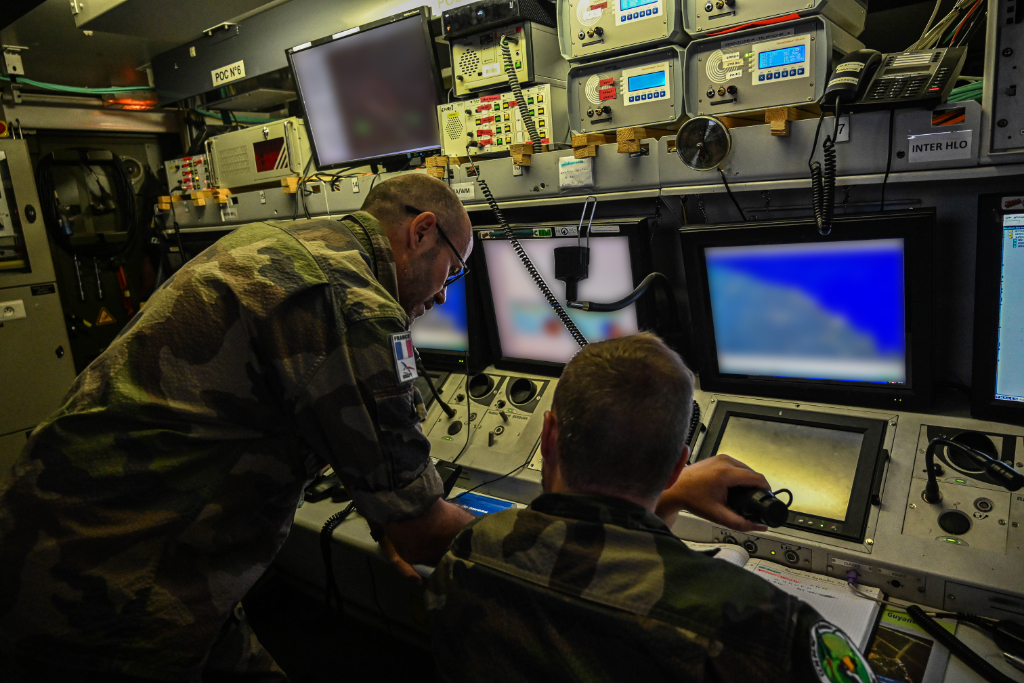
In 2008, the mission to protect the Guiana Space Centre was officially given its current codename, “Operation Titan”.
Today, the permanent protection system includes dispositif particulier de sûreté aérienne (special aviation security system – DPSA), consisting of Fennec and Puma helicopters from the 68th Transport Squadron “Antilles-Guyane”, based in Cayenne. The DPSA is responsible for creating an aerial protection zone to safeguard the spaceport against any unauthorised or malicious activity.
During the first two launches of Ariane 6, the DPSA was reinforced by the special deployment of three Dassault Rafale jets. The three French fighters reached Guiana for the first time on 1st July 2024, after a nine-hour journey of more than 7,000 kilometres from France. The Rafales were accompanied by an Airbus A330 Phénix MRTT (multi-role tanker transport), which also carried ground crews and other support personnel. Eight months later, the mission was repeated to protect the second Ariane 6 launch.
The Ariane 6 is the newest addition to the Ariane launch vehicle family, a European project of expendable vehicles used for launching payloads into space. Built by ArianeGroup within a public-private partnership, it was developed on behalf of the European Space Agency (ESA), which covered the majority of the funding.
The rocket was developed in two variants: the A62 for medium-lift and the A64 for heavy-lift missions. The A64 can lift up to 21,650 kg of payload to low Earth orbit (LEO), up to 11,500 kg into a geostationary transfer orbit (GTO) and up to 15,500 kg into a sun-synchronous orbit (SSO). The A62 has approximately half of these capabilities, respectively.
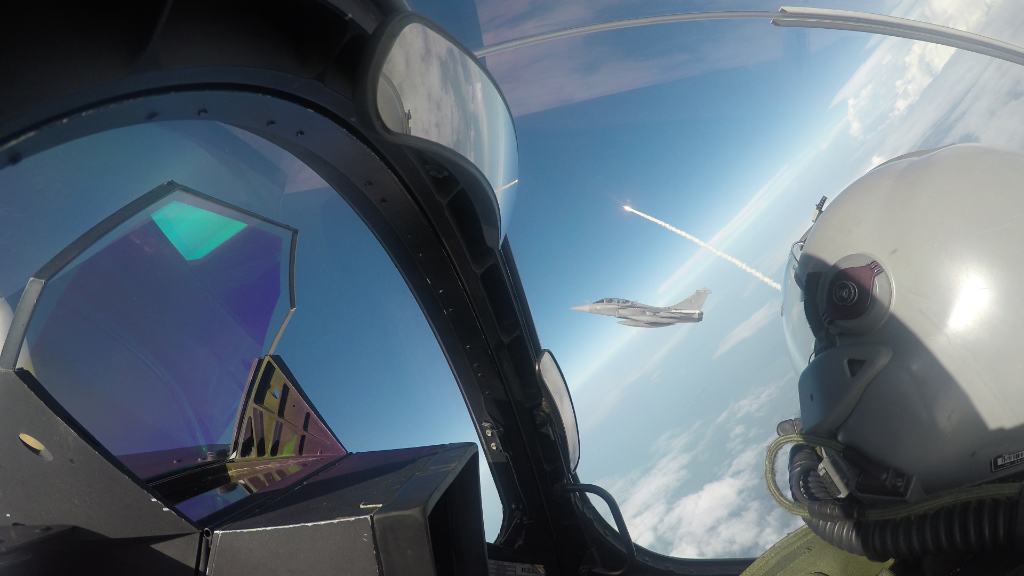
The Ariane 6 is considered a strategic project of the ESA and a flagship of the French and European space industry. The newest launch vehicle allows Europe to join the heavy-lift club, which currently includes only two operational vehicles: Long March 5 from China and Proton-M from Russia. Although several more launch vehicles have been developed for heavy-lift capability, including Angara A5 (Russia), Falcon Heavy and Vulcan Centaur (USA), but none of them has yet performed a launch with a payload exceeding 7,000 kg.
On 12th August 2025, at 9:37 p.m. local time (13th August, 2:37 a.m. in metropolitan France), the Ariane 6 began its third space mission, marking the 300th space launch protected by the local component of the French Air and Space Force. After a flight lasting one hour and four minutes, the Ariane system successfully reached a sun-synchronous orbit at an altitude of approximately 800 km and deployed the four-tonne Metop-SG A1 satellite.
All photos © Armée de l’air et de l’espace. Information from the press releases of the French Ministry of Defence – published on the MoD page in September 2025 – were used, in accordance to the etalab-2.0 licence.


